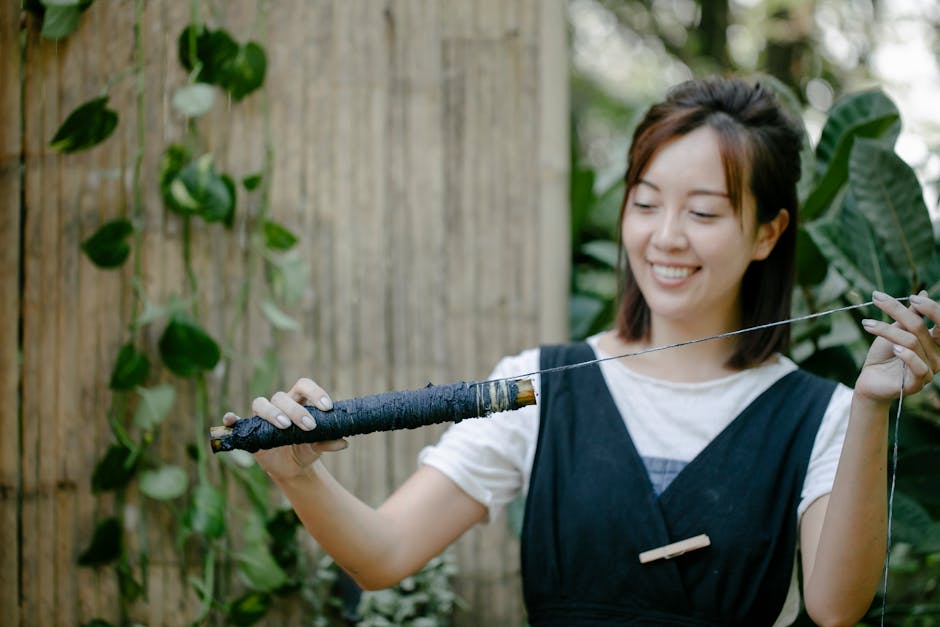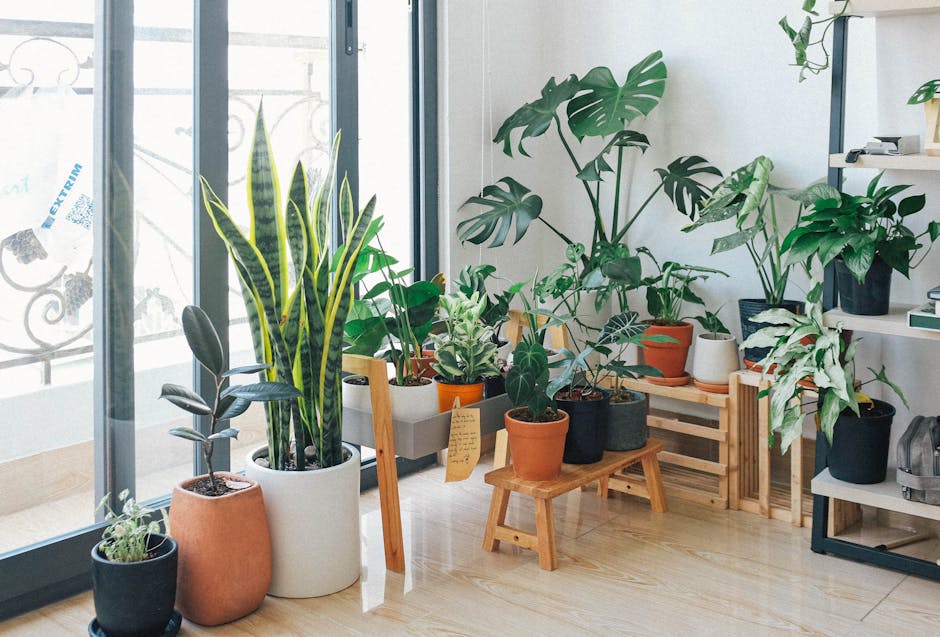Transform Everyday Items into Sustainable Art: The Artisan’s Guide
In a world increasingly aware of its environmental footprint, the fusion of creativity and sustainability offers an exciting avenue for turning everyday items into artistic treasures. Welcome to "The Artisan’s Guide to Eco-Embellishment," where we explore innovative ways to create sustainable art pieces from items that would otherwise contribute to our waste problem. Whether you’re an experienced artisan or just an eco-conscious enthusiast, this guide will inspire you to embrace the beauty of upcycling and the art of sustainable living.
Why Eco-Embellishment Matters

Embracing sustainable practices isn’t just a trend—it’s a necessity for the health of our planet. According to a 2022 report by the United Nations, climate change, pollution, and unsustainable resource use pose significant threats to our environment. Eco-embellishment is an approach that not only beautifies our spaces but also reduces waste and promotes environmental wellness.
By incorporating artistic flair into sustainable living, you can challenge conventional norms surrounding waste. Turning materials into art provides a tangible solution to the ever-growing problem of landfills overflowing with discarded items. More importantly, you inspire yourself and others to consider how creativity can intertwine with sustainable practices.
Unleashing Creativity with Recycled Items

Finding Inspiration in the Mundane

Everyday objects are often looked upon as waste, but they can be transformed into chic decor, functional art, or even fashion statements with a dash of creativity. Consider items like glass jars, old clothing, or discarded wood you might find around your home. These materials can be repurposed in ways that spark joy and conversation.
For instance, an empty glass jar can become a stunning candle holder or a planter for small herbs. An old t-shirt can be turned into a stylish tote bag. The key lies in seeing the potential rather than the limitation. As you start transforming these items, you'll not only enhance your surroundings but also tell a story about resourcefulness and creativity.
Common Materials and Their Transformative Potential

- Glass Containers: Beyond jars, you can utilize broken glass in mosaics or create unique wall art.
- Old Fabrics: Think beyond clothing—tablecloths, curtains, or even worn-out linens can be stitched or tied into beautiful art pieces.
- Wood Scraps: Pallets or leftover timber can be molded into furniture or whimsical sculptures.
- Metals: Cans and scrap metal can be shaped or molded into new, usable items.
For more ideas on transforming materials into functional art, check out our article on the art of upcycling.
Techniques for Eco-Embellishment

Painting and Decoupage
One of the simplest methods for beautifying everyday objects is painting or decoupage. The right shade can breathe new life into a dull item. For example, consider decoupaging an old table with beautiful fabric or vintage paper. Use water-based sealants to ensure the piece remains durable and environmentally friendly.
Stitching and Textile Transformations
Sewing is a fantastic way to breathe new life into fabrics. You might create patchwork quilts from old clothes or design unique wall hangings by blending different textiles. This not only saves materials from becoming waste but also allows you to create something personal and evocative.
Incorporating Natural Elements
Embrace the "nature-inspired" trend by incorporating elements from the outdoors. Use twigs, stones, or dried leaves in your art pieces. For example, twigs can be shaped into frames or even whimsical sculptures that nod to the beauty of nature itself.
Elevating Your Space with Sustainable Art
Indoor Plants as Centerpieces
Plants add life to your interiors and double as sustainable decor. Use repurposed containers for indoor plants, successfully marrying eco-friendliness with aesthetic appeal. Terrarium crafting, for instance, allows you to build beautiful, self-sustaining ecosystems within glass containers.
The Power of Personalization
Your art should reflect your personality. As you create, think about how colors and forms resonate with you. You can try transforming your kitchen with reclaimed wood shelving or utilizing painted tin cans for herb gardens. Explore ideas on how to cultivate your inner garden with self-sustaining indoor spaces.
Transforming Upcycling into a Lifestyle
Slow Fashion and Upcycling
If you’re a fashion enthusiast, you may already be familiar with slow fashion, the practice of cultivating a wardrobe that stands the test of time. Visit our post on creating a capsule wardrobe that champions eco-friendly fashion through upcycling.
By investing in timeless pieces and creatively reimagining your clothing, you contribute to a more sustainable wardrobe. Learn to mend rather than discard, ensuring that your fashion choices resonate with the values of sustainability.
Mindful Minimalism and Slow Consumption
Adopting a mindful approach toward consumption fosters sustainability. It encourages us to cherish what we have and approach shopping thoughtfully. Epic eco-alternatives exist today, encouraging you to embrace minimalism. Explore the concept of mindful minimalism as a way to declutter your life without compromise.
The Benefits of Eco-Embellishment
Creating art from recyclable materials provides various benefits, not just to your home but to your mind and environment:
Economic Savings
By turning waste into art, you save money while engaging in a fulfilling creative process. Instead of purchasing new items for decoration, your home becomes imbued with personal touches showcasing your personality.
Environmental Impact
Your creative efforts contribute positively to the environment. By reusing materials, you actively participate in reducing landfill waste and utilizing fewer natural resources. This conscious decision helps combat the negative effects of consumerism on our planet.
Increased Mindfulness
Engaging in sustainable art encourages mindfulness. When you create, you become more in tune with your surroundings and the materials you use. This process leads to an enhanced appreciation for nature and material culture, allowing for personal growth and fulfillment.
Community and Connection Through Art
Workshops and Community Events
Participating in or hosting workshops within your community can bring people together. Consider organizing a local event where people can share their experiences, craft, and exhume creativity through eco-embellishment. This not only promotes eco-friendly practices but also builds connections.
Sharing and Collaboration
Collaborating with local artists or fellow DIY enthusiasts can introduce fresh ideas and techniques. This communal approach can pave the way for more innovative creations, emphasizing the beauty of collective inspiration.
Find community insights on fostering urban biodiversity with eco-friendly micro-habitats.
Your Role in the Sustainable Movement
As you embark on your eco-embellishment journey, remember that every small action counts. Your efforts to create sustainable art inspire others to reflect on their consumption and recycling habits.
Educate and Advocate
Share your knowledge with friends and family about eco-embellishment techniques or the impact of waste on our environment. Raise awareness in the community about eco-friendly practices and encourage others to engage in similar endeavors.
Keep Evolving
Sustainable living is an ongoing journey. As trends and practices evolve, remain open to exploring new techniques and materials. Attend workshops, follow sustainability advocates online, and delve into literature about sustainable art forms.
Final Thoughts
In a world filled with disposable products and fast fashion, "The Artisan’s Guide to Eco-Embellishment" represents a refreshing perspective on creativity and responsibility. By reimagining everyday items, we contribute to a world that values sustainability and artistic expression. Not only does this approach help combat waste, but it also enriches our lives with personal fulfillment and connection to our environments.
As you embark on your artistic adventure, remember to approach it with an open heart and mind. The creative possibilities are endless when we allow our imaginations, hands, and sustainable principles to collide in a symphony of conscious living.

